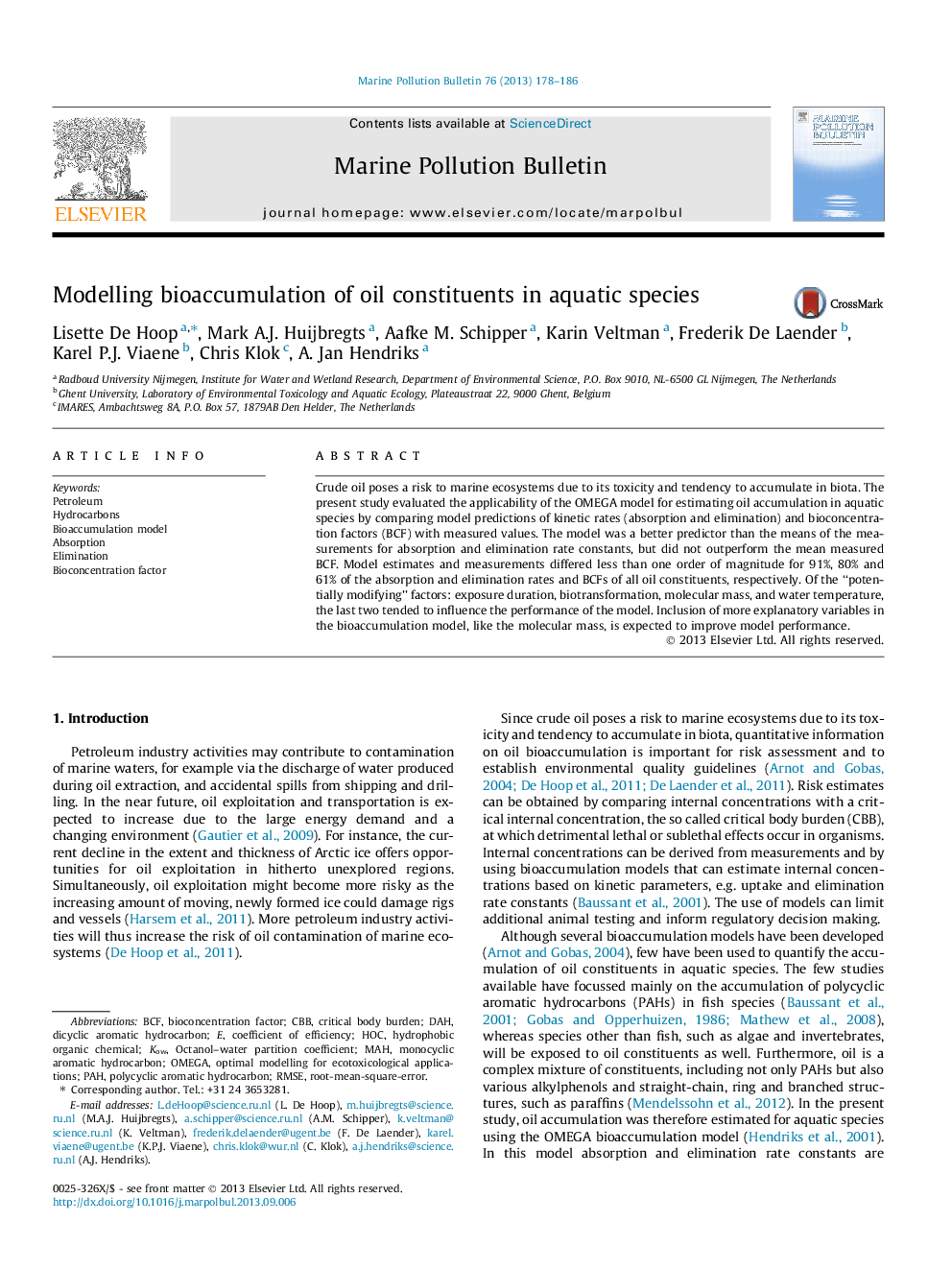| Article ID | Journal | Published Year | Pages | File Type |
|---|---|---|---|---|
| 6359090 | Marine Pollution Bulletin | 2013 | 9 Pages |
Abstract
Crude oil poses a risk to marine ecosystems due to its toxicity and tendency to accumulate in biota. The present study evaluated the applicability of the OMEGA model for estimating oil accumulation in aquatic species by comparing model predictions of kinetic rates (absorption and elimination) and bioconcentration factors (BCF) with measured values. The model was a better predictor than the means of the measurements for absorption and elimination rate constants, but did not outperform the mean measured BCF. Model estimates and measurements differed less than one order of magnitude for 91%, 80% and 61% of the absorption and elimination rates and BCFs of all oil constituents, respectively. Of the “potentially modifying” factors: exposure duration, biotransformation, molecular mass, and water temperature, the last two tended to influence the performance of the model. Inclusion of more explanatory variables in the bioaccumulation model, like the molecular mass, is expected to improve model performance.
Keywords
Related Topics
Physical Sciences and Engineering
Earth and Planetary Sciences
Oceanography
Authors
Lisette De Hoop, Mark A.J. Huijbregts, Aafke M. Schipper, Karin Veltman, Frederik De Laender, Karel P.J. Viaene, Chris Klok, A. Jan Hendriks,
